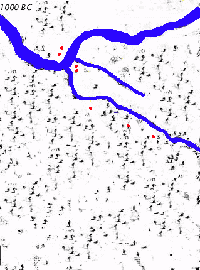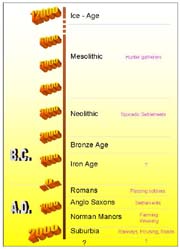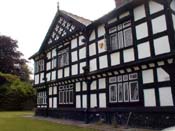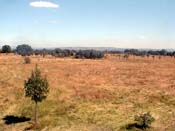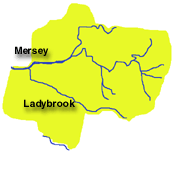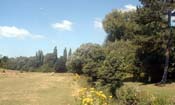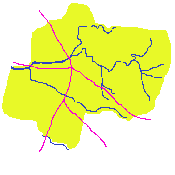Cheadle Hulme |
. | . | History - Overview |
|
3 Millennia of Land Use in the Cheadle Hulme Area
|
Features Its history involves also the histories of Cheshire, Stockport, Manchester, and the political, industrial and technological changes in England and the United Kingdom.
|
|
Landscape
Much of the land changed in prehistoric times from barren tundra to peat bogs and mosses, to open farmland, and in the second millennium to cultivated farmland, to isolated cornmills, to home textile production, and finally to housing, light industry and shopping areas. The lack of mining, raw materials, or powerful rivers have kept the place green, pleasant and peaceful for a long time until it eventually succumbed to human commuters.
|
Population increased population and produced the rural village community which then changed almost beyond recognition, becoming overridden due to mass house and road building during the last 50 years to accommodate the expanding populations of Stockport and Manchester.
Handforth Dean Shopping |
||
| . | Future! Will Cheadle Hulme keep expanding across the 'green belt' and fuse with other communities to the south and west? |
Future! Will major sporting and leisure developments consume it? |
Future! Will the internet and other modern technologies relieve its roads and travellers? |
